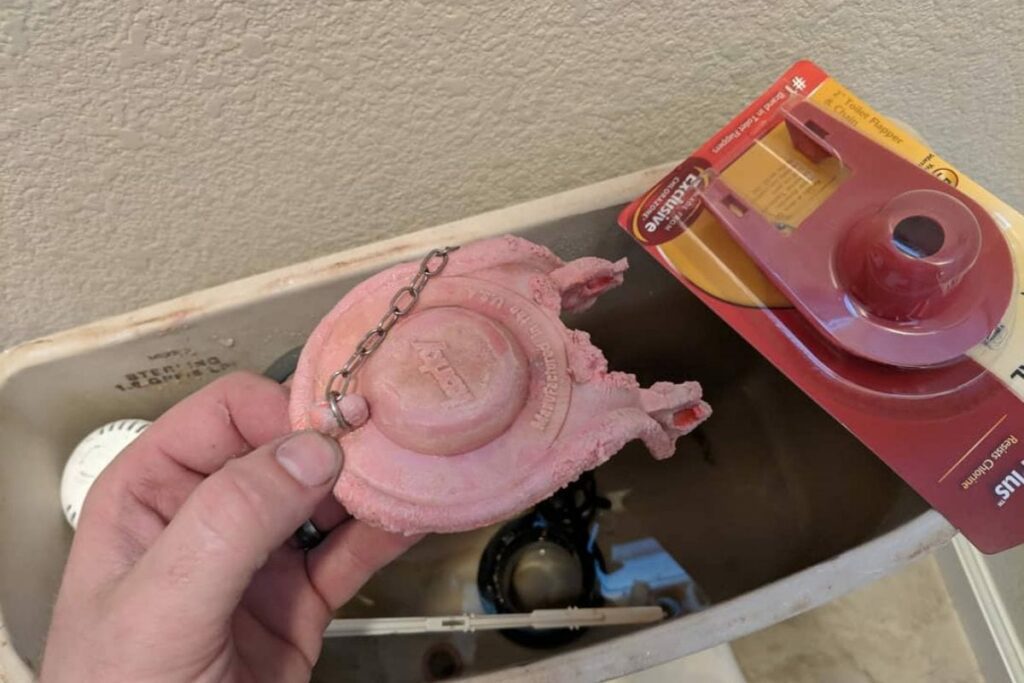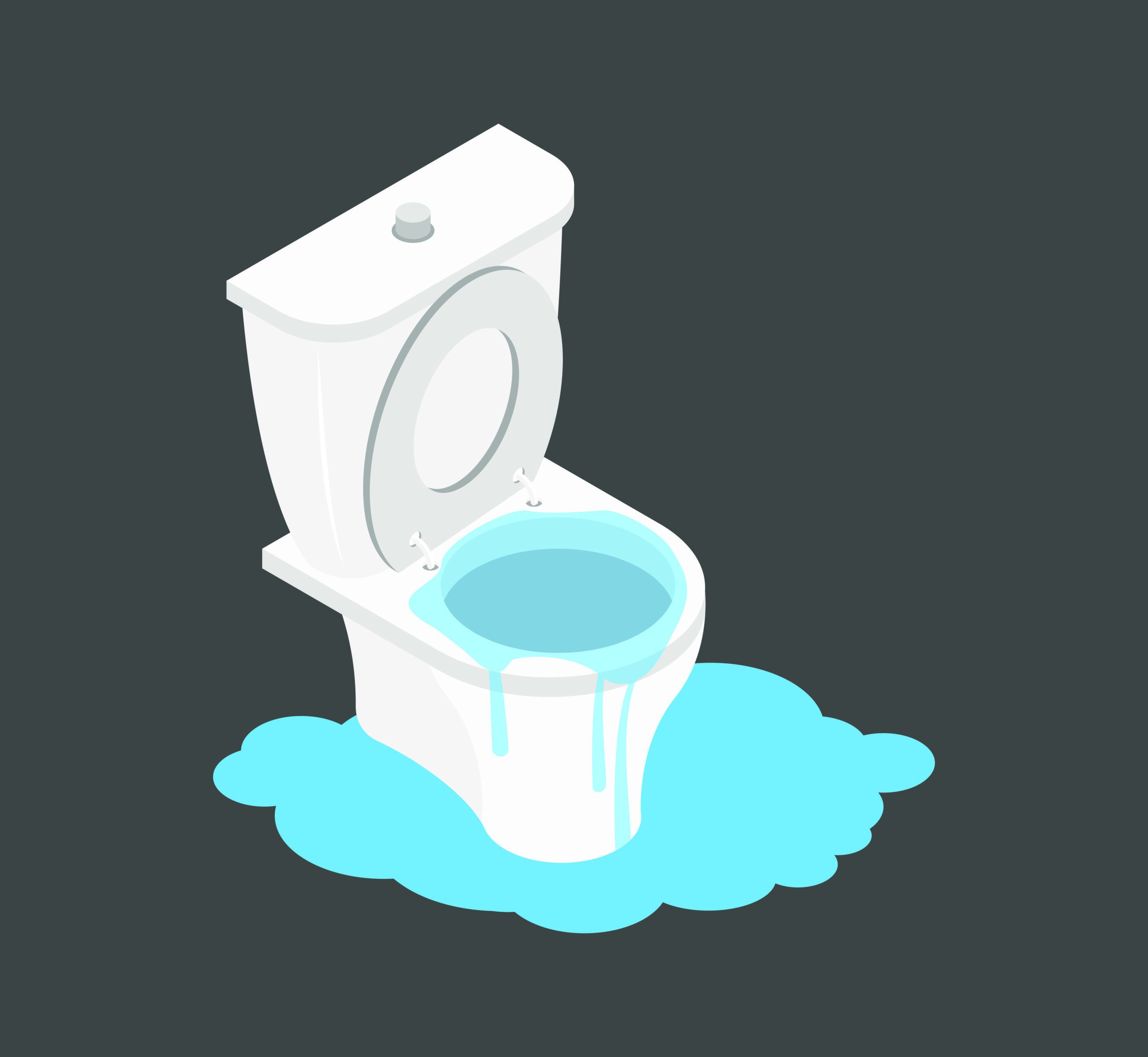Having to deal with an overflowing toilet is nothing short of a nightmare, especially when you don’t know what is causing the problem. While a clogged toilet can lead to overflow, it is not the only reason you have a mini water event in your bathroom!
Common reasons your toilet is overflowing without any apparent clog include a malfunctioning vent pipe, a faulty flush tank valve, or a problem with the septic tank. Knowing the reason for the overflow can help you find ways to fix the problem.
In the following sections, we will look at some of the most common causes of an overflowing toilet and discuss ways to fix them. So, if you want to be prepared the next time your toilet overflows, stick around!
Why is My Toilet Overflowing Even When it is Not Clogged?
While a clog is the most common reason for your toilet overflowing, there can be other reasons for it as well. Hence, it is wrong to assume that every time your toilet clogs, it is due to a clog.
Let’s explore some reasons for an overflowing toilet that has no clogs-
Malfunctioning Vent Pipe

A vent pipe or vent stack is essential to your plumbing system. It works alongside your plumbing line to maintain a constant sewer flow. Every time you flush your toilet, the plumbing vent replaces the lost air from the system by introducing external air.
A properly functioning plumbing vent ensures no vacuum is forming within the pipes and the water flow is smooth and quick. If the vent is blocked, you might notice that the water drains much slower than before.
As plumbing vents open outside your house near the roof, there is a chance that these might get clogged over time due to debris, bird nests, or even dirt.
It is possible to tell when your plumbing vents are clogged or malfunctioning by looking out for the following signs-
- Water is draining much slower than before
- A foul smell in the bathroom
- Gurgling noise when you try to flush your toilet
- The P-trap is dry, and there is no sitting water in the toilet bowl
If the plumbing vent gets clogged, it can cause a total blockage of water flow and result in an overflow every time you flush your toilet.
While in most American homes, the vent pipes are located at or near the roof, in some properties, they are also found near the basement.
Faulty Flush Tank Valve
If you observe that your toilet is overflowing after you flush, it might be due to a faulty flush tank valve. The flush tank has three important parts that help it to operate properly-

- The flapper
- The gasket
- The ballcock
A problem in any of these parts can result in issues controlling the water flow from the flush tank.
A flapper is a part of the flushing system that initiates and, more importantly, stops flushing. When you pull the flush handle, the flapper is lifted, allowing the water in the flush tank to enter the toilet bowl. Once the water level drops in the tank, the flapper goes back to its original position cutting off the water supply to the bowl.
The flapper can’t shut off the water flow if it is worn out or misaligned due to debris or deposition. As more water enters the toilet bowl than can leave, it overflows.
So, if you have a faulty flapper, the toilet water will run continuously. If you have a clog further down the sewer line, the excess water can cause the toilet to overflow quite easily.
Problems With the Septic Tank
A septic tank is an underground sedimentation tank used to decompose waste material before dumping it in the sewers. If you have a septic system installed in your home, the overflowing toilet can directly result from problems with the system.
If your septic tank is not pumped out and cleaned for more than ten years, it might not be able to accept any more water causing the system to backup.
The septic tank houses beneficial bacteria that decompose the waste before it can be fed to the sewer lines. Anything disturbing the bacterial population can cause problems with the working of the septic tank. Flushing antibiotics down the toilet, for instance, can kill off the helpful bacteria causing the system to malfunction.

If your septic tank is full and is causing your toilet to overflow, you will start to notice the following tell-tale signs-
- If your house or the backyard where the septic tank is located starts to stink
- If the area around the septic tank gets soggy due to leaking wastewater
- If your toilet flushes extremely slowly or not at all
- You hear rumbling noises coming from your bathroom every time you try to flush
How to Fix an Overflowing Toilet That is Not Clogged?
Fixing the toilet that is overflowing but not clogged depends on the reason behind the problem. Before trying the following solutions, ensure that you have turned off your toilet’s water supply.
Fixing the Vent Pipe
You are lucky if your toilet is overflowing due to a malfunctioning vent pipe. It is quite simple to fix a faulty vent pipe. Check if anything is obstructing the line from the inside. You can even use a toilet snake to unblock the pipe if any obstruction is present.
Exercise caution if your vent pipe is on the roof. If the problem persists after cleaning the line, you should call a professional to look at the plumbing system.
Fixing the Faulty Flush Tank Valve
Problems with flush tanks are more common than you might think. Suppose the flapper is too old, worn out, or has mineral deposition. In that case, it might not close properly, causing the toilet to overflow.

It might be due to a faulty flapper if you observe the toilet running continuously or making a hissing sound. You can replace this component by yourself quite easily.
Sometimes, the gasket below the flapper seal can also cause problems. If the gasket is not working properly, the water might leak out constantly, occasionally overflowing.
Fixing Septic Tank Issues
If the problem of an overflowing toilet is due to a full or clogged septic tank, you might have to call professional plumbers to get it cleaned. It would be best to get your septic tanks cleaned every 10-12 years. It is best to get professional help if you have issues with your septic tank.
Frequently Asked Questions
Can a damaged flipper cause toilet overflow?
Yes! A damaged flipper can cause the toilet to flow continuously, resulting in an overflow, especially if there is a clog down the sewer line.
Should you clean your septic tank yourself?
Trying to clean the septic tank yourself is not a good idea. It is best to seek help from professional plumbers if there is a problem with your septic tank.
To Conclude
Knowing why your toilet is overflowing can help you find simple yet effective solutions. Suppose you have any significant issues with your plumbing. In that case, it is best to call professional services to prevent the problem from getting out of hand.

Amos Christen graduated with a bachelor’s degree in Interior Design from Drexel University — Philadelphia, PA. Since 2003, Amos has worked with top interior design professionals in this area, including architects and interior/graphic/lighting designers. As a skilled interior designer, Amos Christen is highly versed in fine arts and crafts and uses that to supplement his main area of expertise. He often publishes articles related to home décor on several websites, including Sprucetoilets.com, Sprucebathroom.com, and Mybesuitedhome.com. He also contributes to leading interior design magazines.
